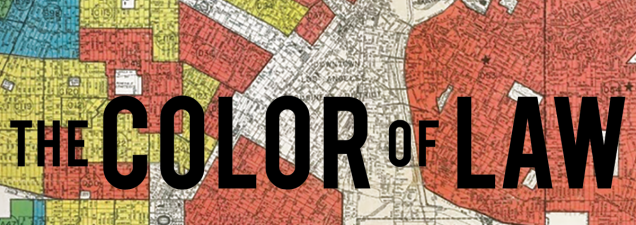To learn more about this topic, please consider consulting some of the following resources:
- The Color of Law, Richard Rothstein (book)
- Segregated by Design, documentary based on The Color of Law (film short)
- Sundown Towns: A Hidden Dimension of American Racism, James Loewen (book)
- Long Island Divided, investigative journalism on current racial discrimination in real estate, Newsday (article)
- Kept Out, on racial discrimination in banking and mortgage access, Reveal News (article)
- African American Homeownership Falls to a 50 Year Low, title is self-explanatory, NAREB -- National Association of Real Estate Brokers (article)
- The Racist Legacy of America's Inner-City Highways, Dallas Magazine, (article)
- How a 'Segregation Tax' Is Costing Black American Homeowners $156 Million, Curbed, (article)

Many Americans have grown up knowing about some problematic history in their own community with respect to segregation. For many of us, this has been considered a piece of shameful local lore and a bad form of exceptionalism. What many of us don't realize is how widespread such stories actually are.
Most of the time we each just have a piece of the puzzle. One person may know about racially restrictive covenants placed on the deeds of sale for houses in one part of their town. Another may be aware of their community's history as a "sundown town" where people of color were not welcome after dark by ordinance. Another may know how their area's public schools shut down entirely rather than submit to desgregation post-1954. Another may know something about redlining in different neighborhoods in their city. Another may know how their city's black neighborhoods were purposely sited next to dangerous industries. And another may realize that thriving black business districts in their hometown were removed when the interstate highway system cut through.
What we rarely see is that these things were all part of a broader picture -- that they were not sad exceptions to our history of people doing in the wrong thing in one town, city, or region, but rather that they were part of a pattern of systematic segregation established by policies and laws around the country and enforced by local, state and federal authorities as relevant for each case.

Journalist Richard Rothstein recounts the relentless litany of these shameful restrictions to life, liberty and the pursuit of happiness for black people across the country. His book "The Color of Law" spells out in agonizing detail how the settlement patterns we know now did not just happen by chance much less by choice. We like to talk about how our communities are currently racially segregated but to then say that this is just "de facto" segregation as opposed to "de jure" -- imposed by law. Rothstein clearly traces the consistent undermining of our best aspirations and principles as a nation by concrete housing policy, perverse market intervention, and outrageous failure to comply with the law.
The book is fairly dense, but a very rewarding read. For an ultra-abbreviated version, you can watch a 17 minute companion video entitled "Segregated by Design." The video reviews the basic mechanisms of some of the most oppressive practices, though it cannot capture the sense of the pervasiveness of the problem. This was not something only the South had to deal with or only big cities. We all have aspects of this to reckon with.
For people in organizations like Lewisburg Neighborhoods, it's instructive to read about how Community Associations and Neighborhood Improvement Organizations were at times weaponized to resist, reject, and eject black people from neighborhoods they quite reasonably sought to live in. The legacy of such problematic actions must be taken into account as we work to do effective and earnest outreach to neighborhood residents today. People may have very good reasons to be skeptical of being approached or invited to meetings or asked for their input on planning.
Realistically, confronting these topics is essential for anyone involved in economic or neighborhood revitalization.


